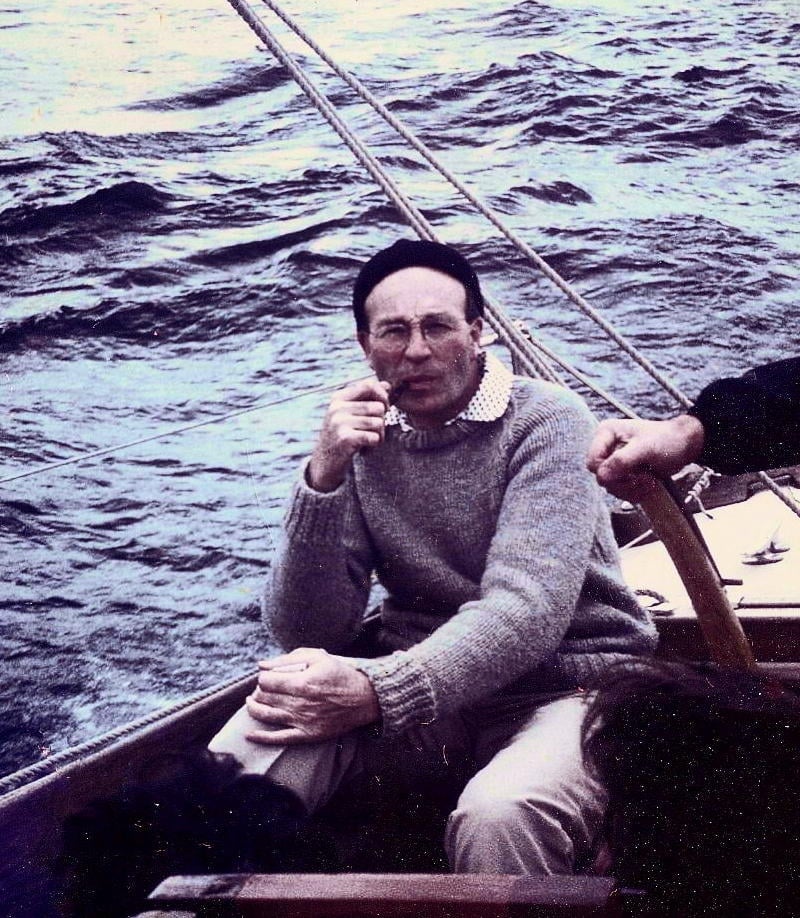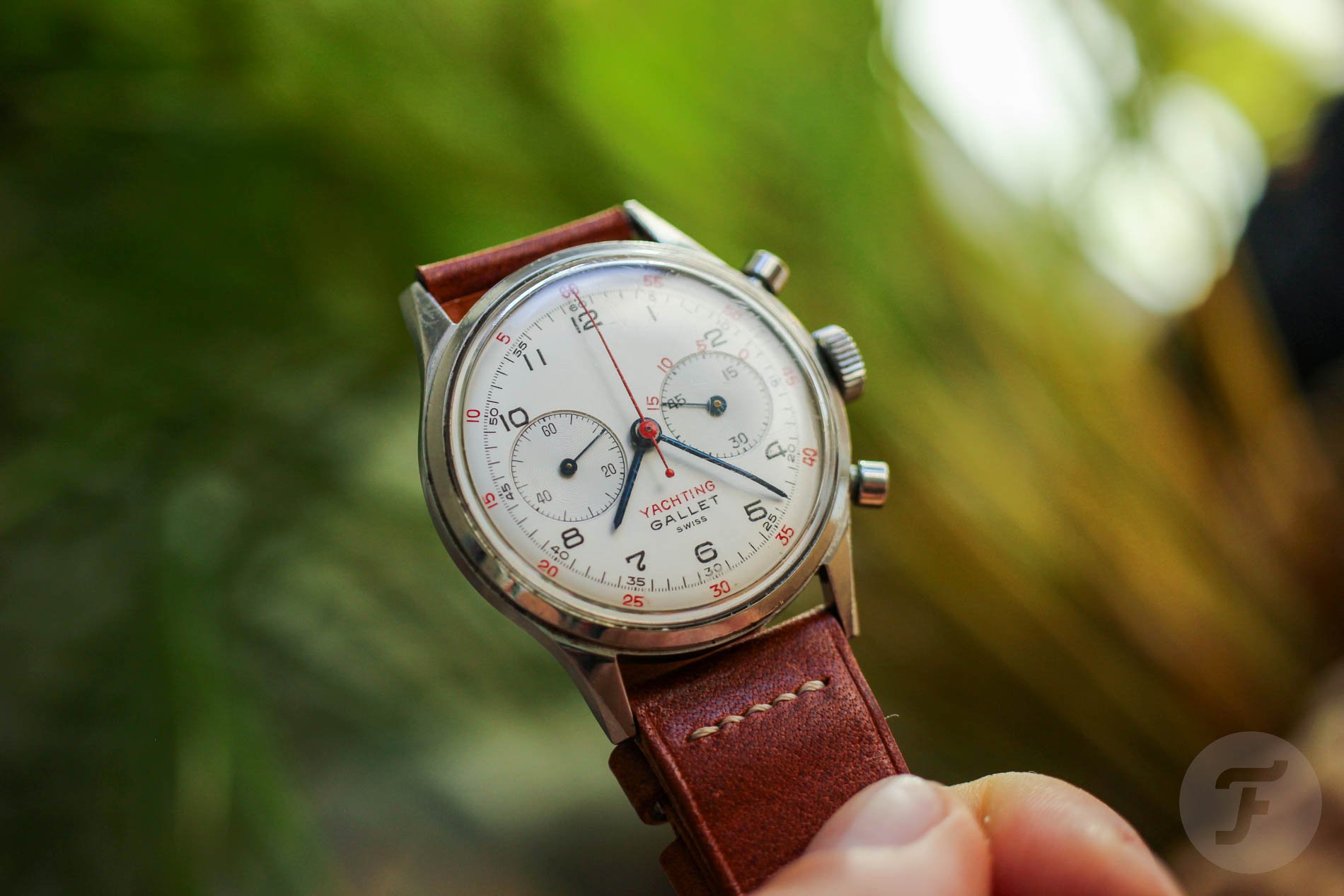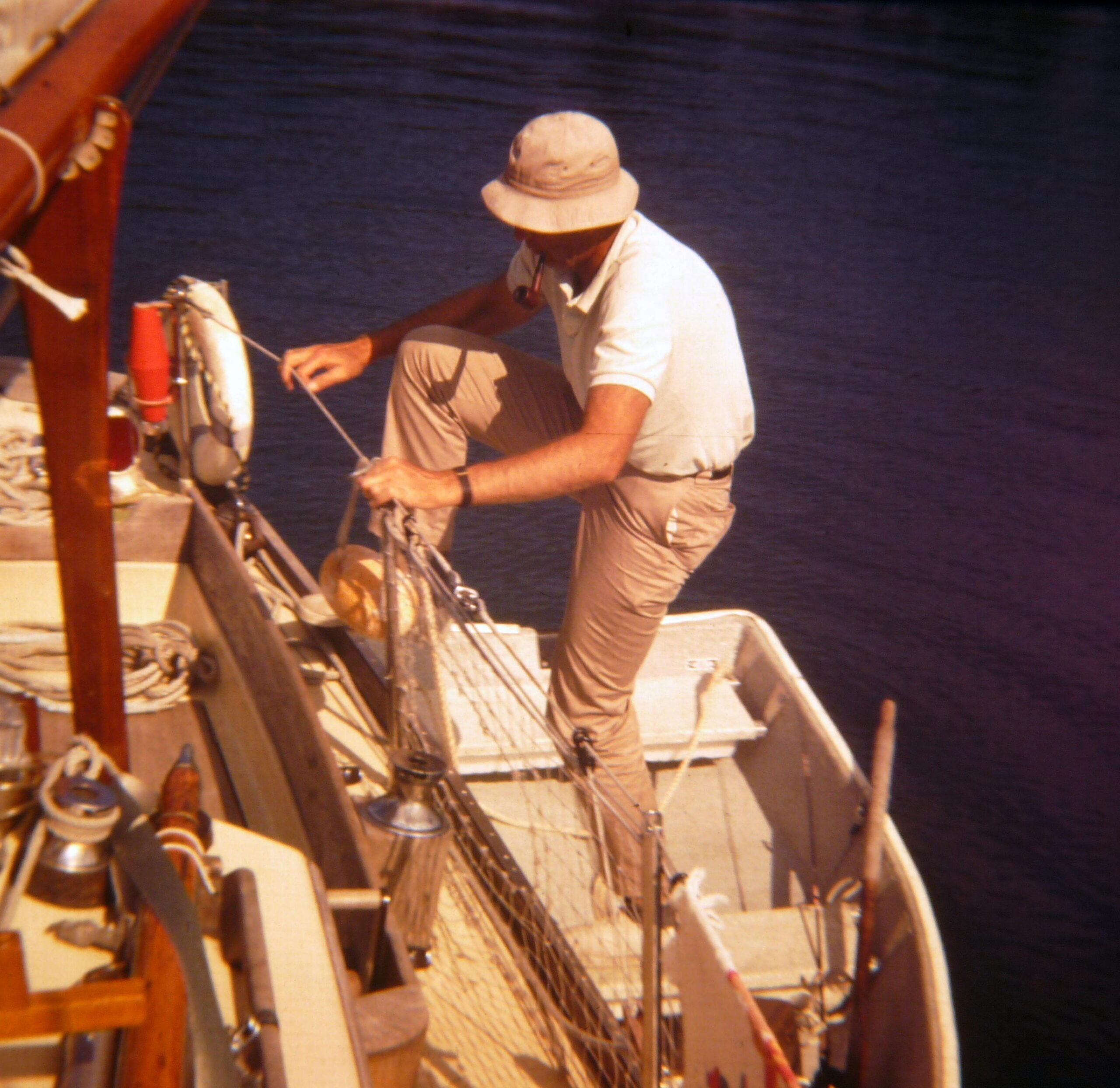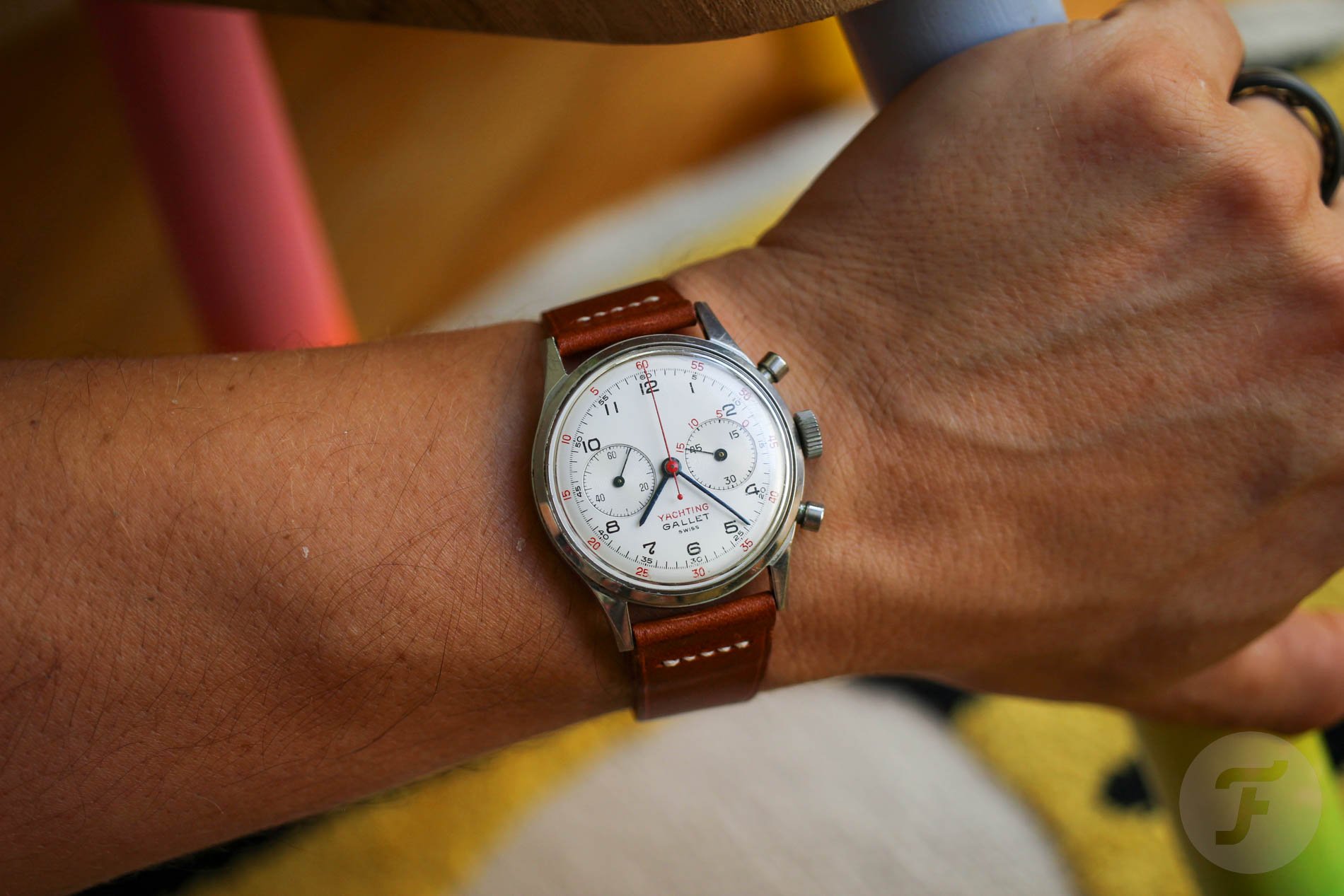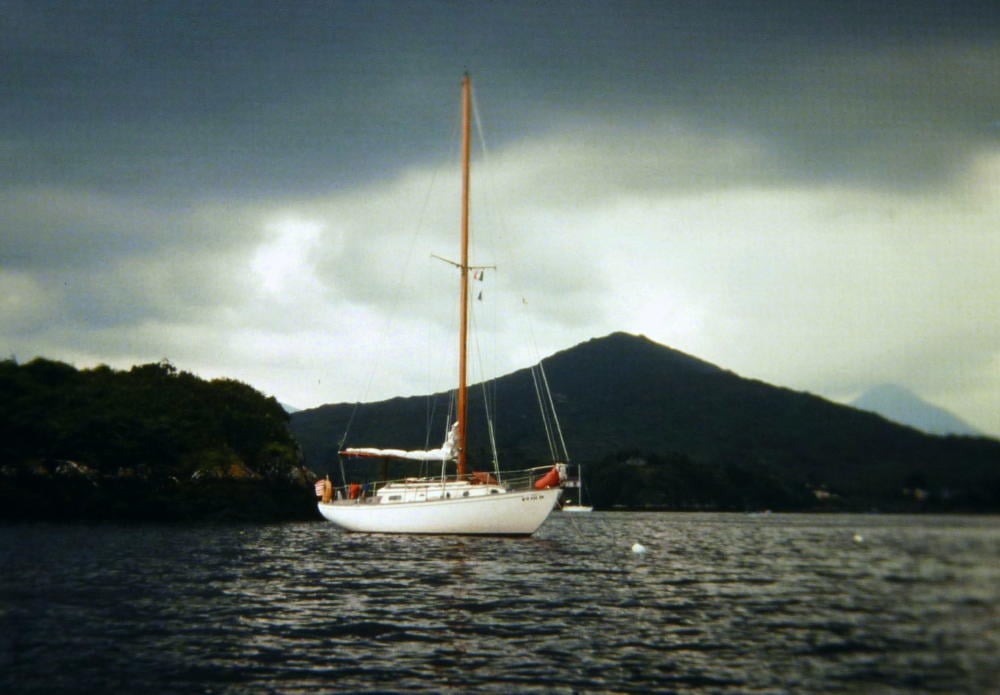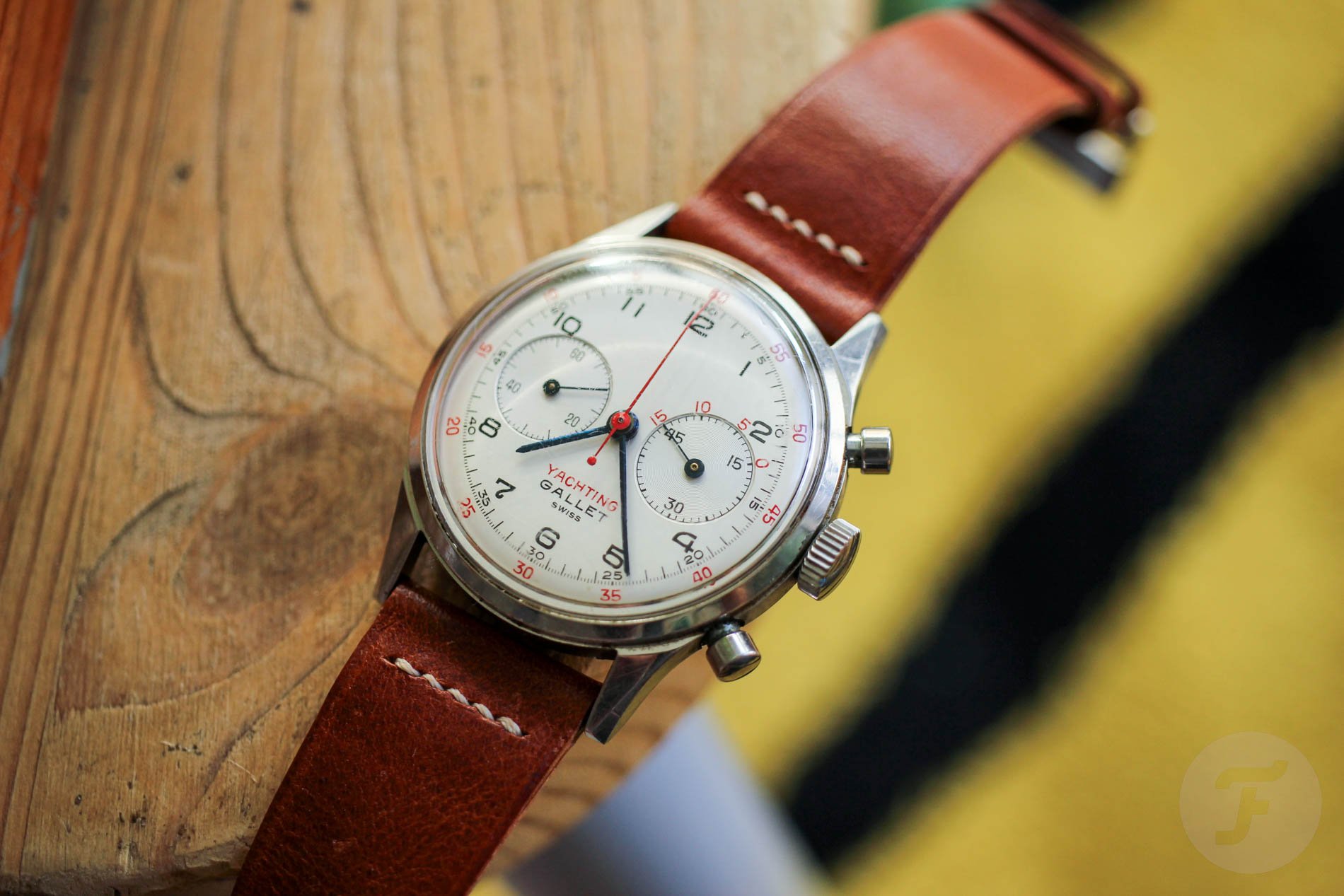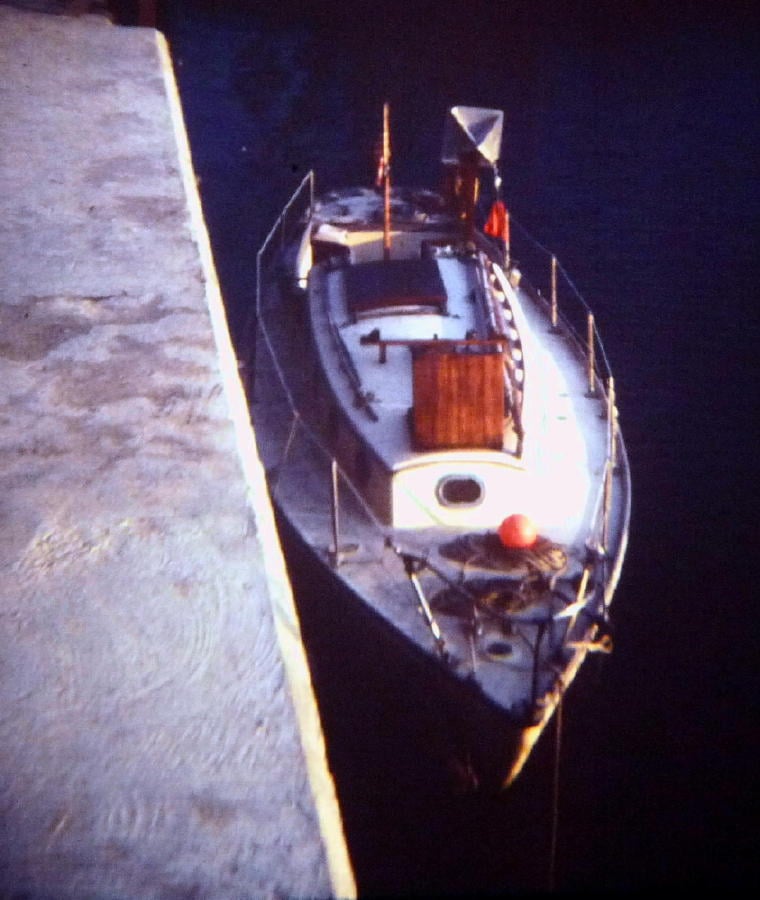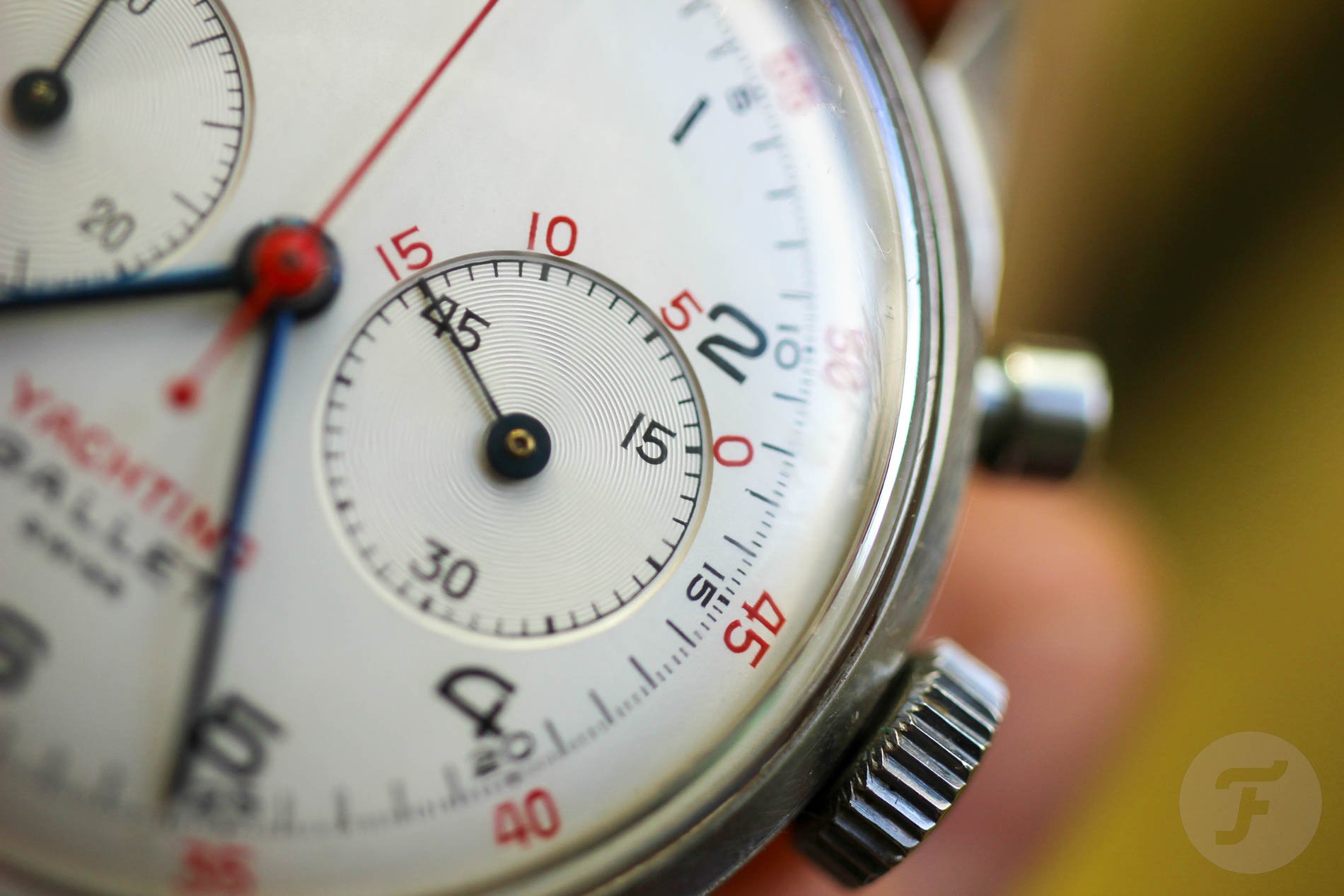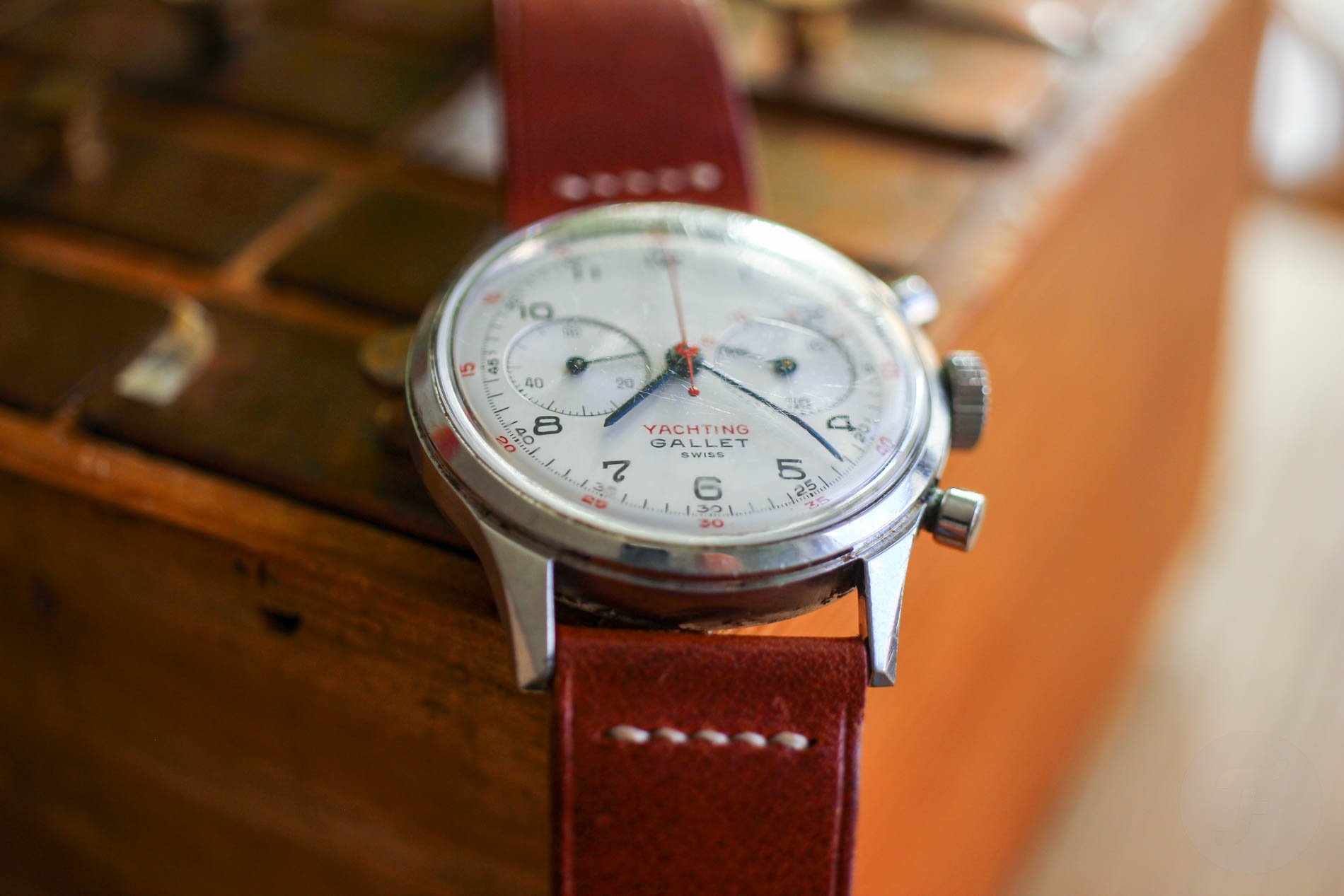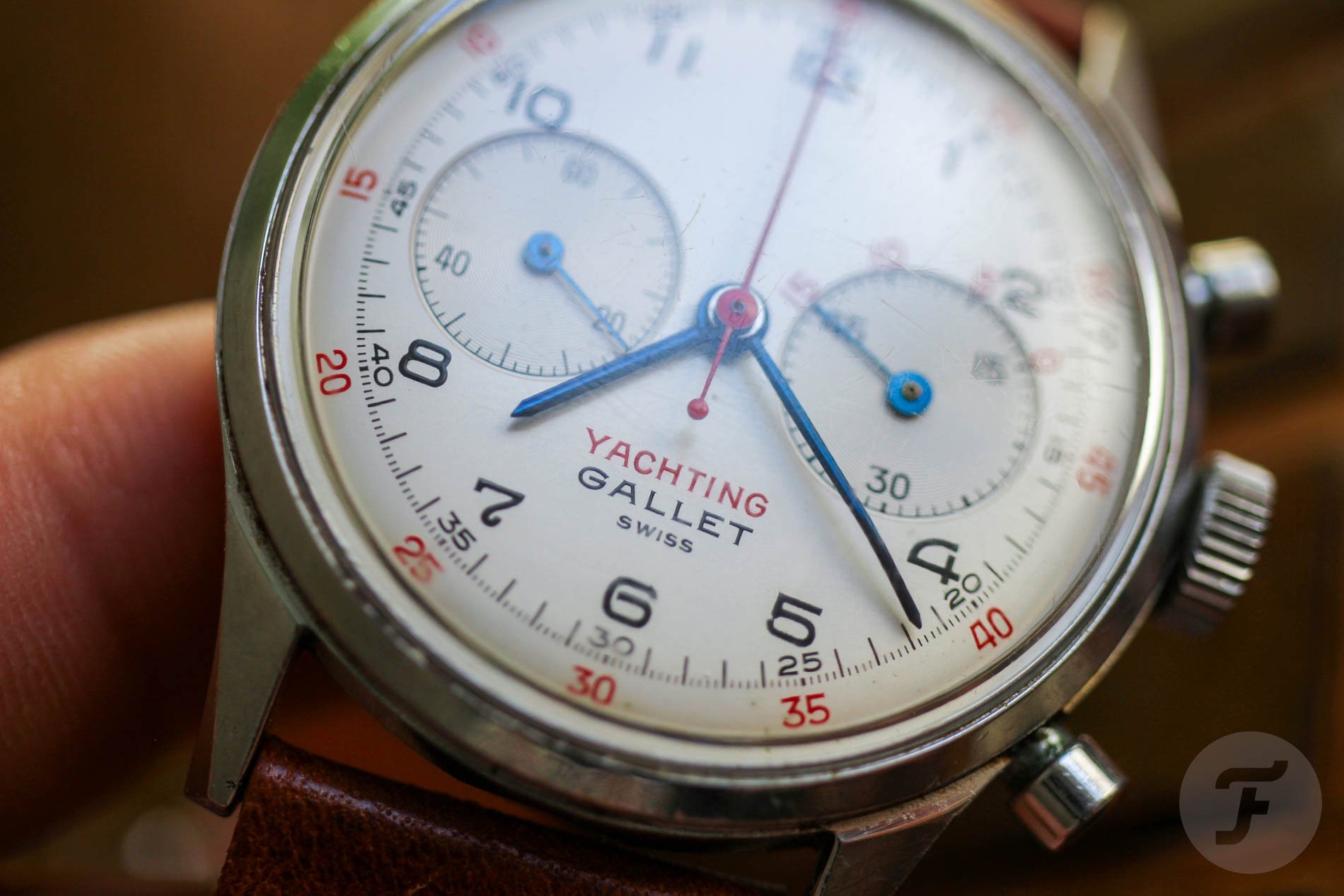Retrospective: A Gallet Multichron Yachting And An Unbelievable Ocean Adventure
Imagine you are a cardiologist, and you take your family on a transatlantic voyage in a sloop sailboat without any navigation or any modern electronic aids. With waves 12 meters high, a dramatic storm incident, a broken mast, and a huge freighter running against you, it is anything but a leisure cruise. But tolerance and the general perception of danger were completely different in the 1970s. What was an ordinary summer for the protagonists in this story would, by today’s standards, be deemed unimaginable individual heroism, perhaps even madness.
A Gallet Yachting in my inbox
“I believe my father was given this watch in the late 1970s/early 1980s, but I am not sure,” reads the first email I got from Jim Sweeney. That email with two shots of a Gallet Yachting attached turned into the greatest and most adventure-filled story I have ever encountered while hunting vintage watches. It’s been two years since then, but when I think about the details of the story and imagine myself standing on that ship, my throat gets dry, and chills run through me.
Jim’s father was a cardiologist by profession, but his real passion was sailing and racing sailboats. He received this Gallet Yachting watch as a gift more than 40 years ago, though the exact timing is uncertain. It was a token of gratitude from another physician — also an avid sailor — after Jim’s father successfully treated him for a heart attack.
Gallet for racing
Jim described his dad as a practical man who wore a 1950s Omega Seamaster that he had purchased after completing his residency. Even as the watch became discolored and worn, he continued to wear it daily, seeing no need to replace something that still worked. He reserved the Gallet Yachting for sailboat racing due to its stopwatch function. It wasn’t something that sat unused; it saw regular action during races, just not daily wear.
Like my dad
Jim’s father had the somewhat odd habit of wearing his watch with the buckle on the top of his wrist, exactly like my dad. In any pictures of him that Jim found and sent me, all we see is the strap rather than the watch face. Jim remembered asking him once why he did this, and he said it was easier for him to take someone’s pulse with his watch hand and turn his wrist slightly to see the seconds hand.
What came in another email just knocked me off my feet. Jim highly doubts that the Gallet was onboard for either of the trips I am about to describe, but they’re so astonishing that you have to hear about them. Jim decided to keep his father’s Omega watch and let the Gallet go, but it remains a reminder of the fearless lifestyle of the late 1970s.
Transatlantic voyage
The boat at the heart of this story was a Chesapeake 32 purchased new by Jim’s father in 1962, the same year Jim was born. Designed by renowned naval architect Philip Rhodes, it was a classic sloop from an era when thick fiberglass hulls made boats virtually indestructible. After years of sailing throughout the US, Jim, while in his teens, joined his parents on an adventurous transatlantic voyage from Nova Scotia. With no GPS or satellite aids back then, navigation relied on celestial sightings and dead reckoning. Jim’s father was a true old-school sailor, the kind who trusted a sextant over a satellite and believed every crew member should know how to navigate by the stars.
Part one
In 1978, the family set out on a voyage to conquer the Atlantic. Their boat carried nothing but a basic radio and an RDF antenna — no GPS, no autopilot. Yet, after 23 days battling the ocean, they made landfall in Ireland, just 30 miles from their target. Incredible, right? The journey was a slow grind of endless waves and gray skies, punctuated by moments of raw adrenaline, like the night a stay snapped in a storm and Jim had to crawl onto the heaving cabin top, drenched in rain, to rig a temporary fix by flashlight. And then, on the final morning, as the fog slowly lifted, the jagged silhouette of Skellig Michael rose from the sea — a breathtaking reward for a voyage they’d never forget.
For several summers after their Atlantic crossing, Jim’s parents continued sailing their trusty Chesapeake 32 through Irish and English waters, always returning to Castletown for winter storage.
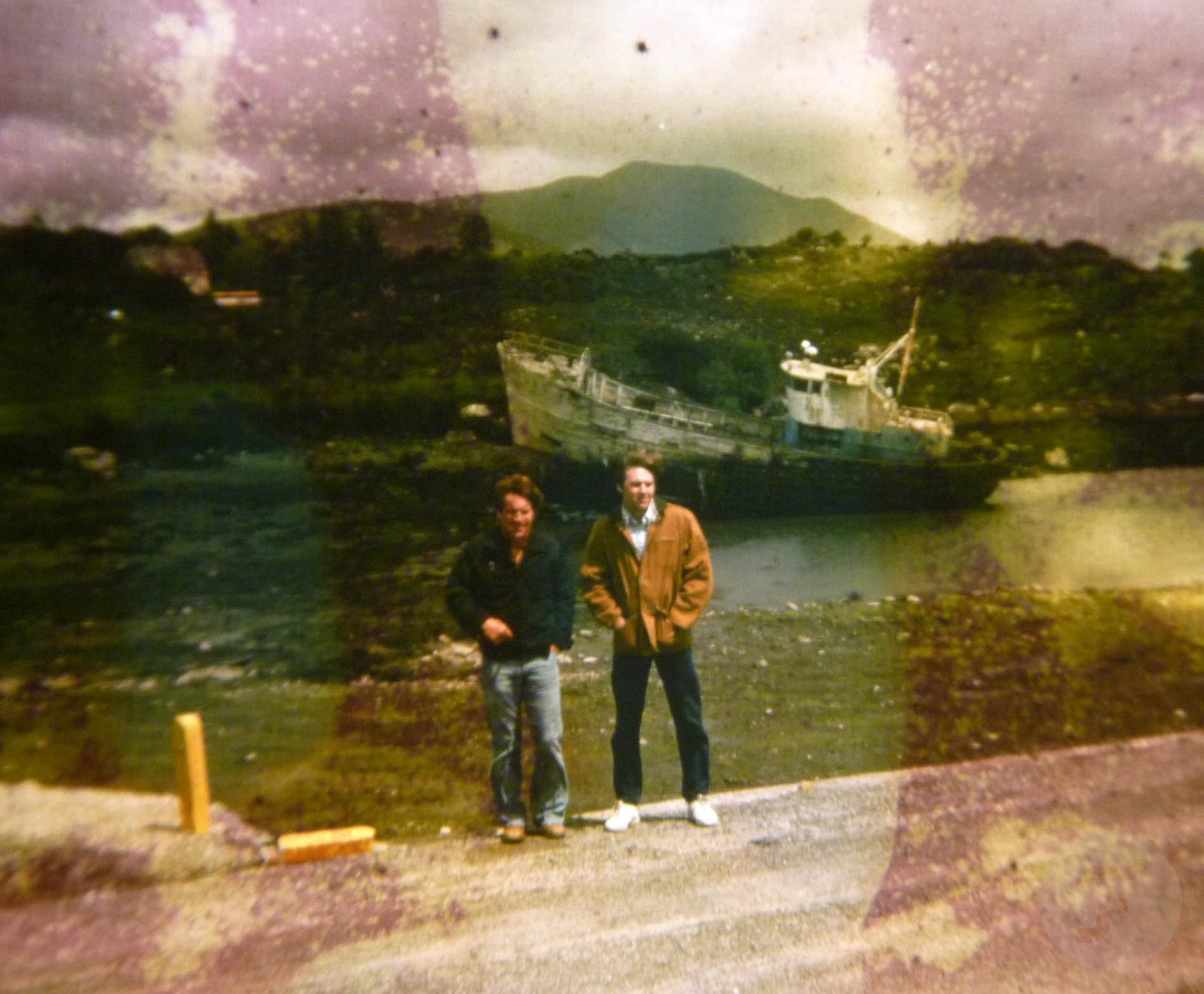
Jim and his friend Steve. Unfortunately, salt water and humidity damaged most of the film in the camera, so only a few pictures survived.
Part two
The next chapter, which took place in 1981, was equally ambitious. They wanted to take the boat down to the Mediterranean. Jim, fresh off his first year of college and neck-deep in summer jobs and girlfriend drama, had no interest in signing on for a family sailing mission. But his parents, ever resourceful, knew how to sweeten the deal. They offered airfare, Eurail passes, and pocket money for him and a fraternity buddy to spend two weeks sailing with them, followed by six weeks of backpacking freedom across Europe. Temptation prevailed.
The first few days at sea were calm and uneventful, with their course angled southwest to skirt the infamous Bay of Biscay. But as they moved deeper into the Atlantic, the sea grew wilder. Towering 12m waves became their new normal. Sailing down into the troughs, the sails would luff uselessly, buried below the wave tops, only to explode full of wind as they crested each mountainous swell, sending the boat roaring down the other side like a roller coaster. While thrilling at first, this soon became exhausting, a relentless routine of trimming sails and holding course. Around the ninth day, monotony shattered into chaos.
Drama
By pure chance, Jim was at the tiller when a massive wave, already breaking, reared up behind them. Within seconds, it crashed over the stern like a freight train, flipping the boat completely. Both Jim and his friend Steve were tossed overboard, but their rope harnesses held. Drenched and shaken, they clawed their way back aboard, minus their sea boots, only to discover the mast had shattered. Below deck, Jim’s father was fine, but his mother suffered a compressed vertebra and a battered face. Upon reaching shore later, her injuries earned his father suspicious glares from locals, who assumed the worst.
A few hours after the rollover, Jim spotted a freighter a few miles away and, after some urging, his dad attempted to signal it with a vintage flare gun, only for each flare to be blown sideways into the sea, uselessly fizzling out. “When I suggested using the EPIRB instead, its antenna snapped off in his hand,” Jim says in the missive he wrote years later, after his father passed away. “My father sat laughing at the broken device, and we realized we’d have to tough it out without outside help — something I suspect secretly suited him just fine.”
Land!
Three days later, salvation appeared as faint lights on the horizon. By morning, the seas had calmed, and they motored toward land, hugging a sandy coastline they couldn’t identify. A fishing boat approached, its captain speaking a language that wasn’t Spanish or French. He gestured for them to follow, leading them safely into a small harbor in Peniche, Portugal. There, they were met with warmth and generosity from locals who helped them recover.
With no mast, the boat desperately needed repair. A family friend from Michigan who also owned a Chesapeake 32 came to the rescue, sending a replacement mast via air freight to Lisbon. They welded and stepped the mast, and within a month, the boat was seaworthy again. Jim and his friend, released from duty, headed off by train to begin their European adventure.
Jim’s parents would return to the Mediterranean for several more summers before finally selling the boat. Decades later, in the early 2000s, Jim managed to track it down — Chesapeake hull #45, lovingly restored and sailing on under a new owner in the Netherlands, a legacy that still floats strong.
Thoughts on the Gallet Yachting
In my first deep dive into the Gallet Multichron Yachting, I named it “one of the most beautiful vintage dual-register chronographs that have ever passed through my hands.” Four years later, I still feel the same way. I sold that Multichron Yachting to another Gallet collector, so I knew it would be in good hands, to get the funds to buy another Gallet Yachting from Jim. It wears like the one I had, but its dial has a nice bonus with the Gallet logo printed unusually at the bottom.
Just like with my vintage Alpina Seastrong 10, I decided not to polish or change the original crystal. I like to run my thumb back and forth over it just to absorb the depth of every single scratch. I may polish it at some point, but for now, I appreciate it as is — like it just left Jim’s father’s wrist.

